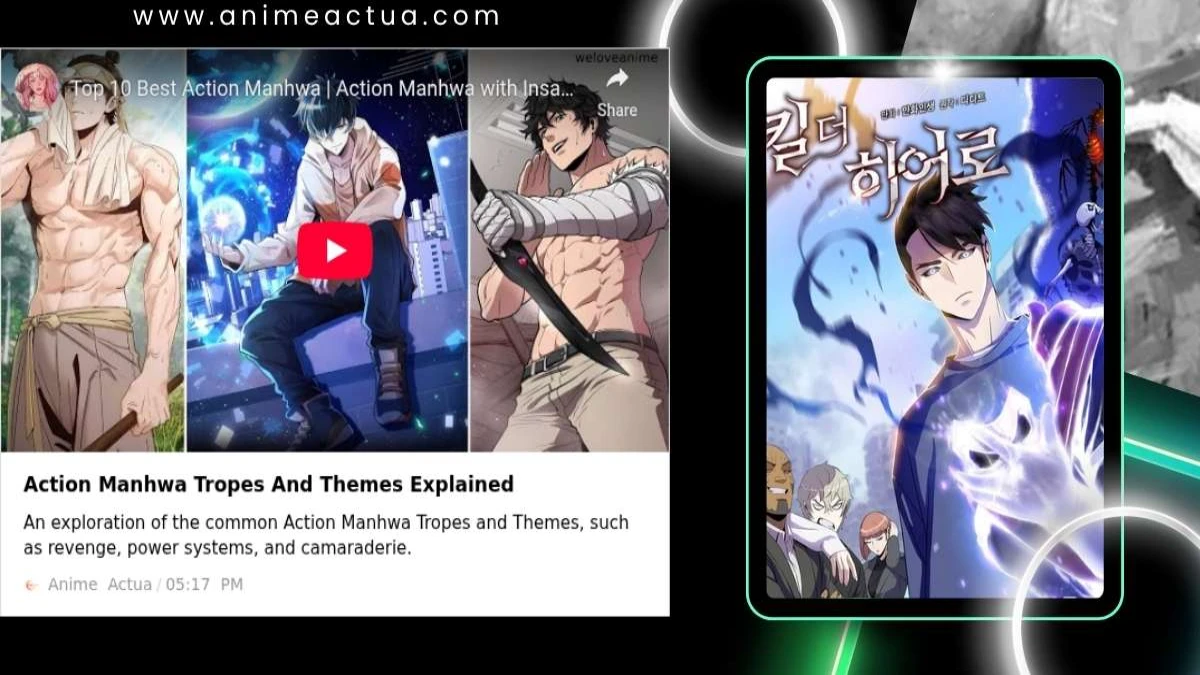Common Tropes and Themes in Action Manhwa Explained
Dive Deeper: Watch This Explainer Video!
Gain more insights into the fascinating world of **Action Manhwa Tropes and Themes** with this video.
Introduction
Action manhwa, Korea’s dynamic and often visually explosive genre of comics, has gained international recognition for its gripping stories, complex characters, and stunning art. Whether it’s a high-stakes martial arts battle or a supernatural apocalypse, action manhwa keeps readers hooked with a unique blend of familiar storytelling patterns—known as tropes—and recurring themes that strike emotional and intellectual chords. This article will explain the most common **Action Manhwa Tropes and Themes**.
If you’re new to manhwa or just looking to understand what keeps these stories so engaging, here’s an expert breakdown of the most common Action Manhwa Tropes and Themes—explained and contextualized. Understanding these **Action Manhwa Tropes and Themes** can significantly enhance your reading experience.
1. The Weak-to-Strong Protagonist
Trope Overview:
A seemingly powerless or underestimated main character suddenly gains strength through training, an awakening, or a mysterious power system. This underdog story arc is one of the most beloved in action manhwa. This is a core **Action Manhwa Trope and Theme**. This particular **Action Manhwa Trope and Theme** resonates deeply with readers.
Examples:
- Solo Leveling – Sung Jin-Woo starts as the weakest hunter.
- The Breaker – Shi-Woon is a bullied student before finding a legendary mentor.
Why It Works:
Readers connect with the idea of personal growth, especially when the journey is hard-earned. This trope often brings satisfying character arcs and power scaling.
2. Overpowered (OP) Main Character
Trope Overview:
Some protagonists start or quickly become invincible, often overwhelming their opponents with ease. These stories focus less on struggle and more on world-building or moral dilemmas. This **Action Manhwa Trope and Theme** explores power fantasies. This is a popular **Action Manhwa Trope and Theme** for readers seeking escapism.
Examples:
- Noblesse – Cadis Etrama Di Raizel is godlike from the start.
- Omniscient Reader’s Viewpoint – Kim Dokja’s knowledge gives him a near-unbeatable edge.
Why It Works:
Power fantasies appeal to readers who enjoy control, dominance, or justice delivered without hesitation. It also lets creators explore grander world-scale conflicts.
3. Game-Like Power Systems
Trope Overview:
A leveling system, skill trees, or stat-based abilities govern characters’ strengths. It mirrors the logic of RPGs and appeals to readers who enjoy numbers and systems. This **Action Manhwa Trope and Theme** provides structured progression. Many **Action Manhwa Tropes and Themes** draw inspiration from gaming.
Examples:
- Hardcore Leveling Warrior – Set in a literal MMORPG.
- Solo Leveling – The main character receives an RPG-like interface.
Why It Works:
Structured power systems give battles a strategic element and create a sense of progression that’s both predictable and exciting.
4. Hidden Identities and Secret Powers
Trope Overview:
Characters often hide their true identities, powers, or affiliations, only revealing them at critical moments—often to great dramatic effect. This **Action Manhwa Trope and Theme** adds suspense. This is a classic **Action Manhwa Trope and Theme** for dramatic reveals.
Examples:
- The Breaker – Chun-Woo hides his identity as a legendary martial artist.
- Tower of God – Bam’s origins are cloaked in mystery.
Why It Works:
This trope adds suspense and tension. Readers enjoy piecing together clues and anticipating epic reveals.
5. School Settings with a Twist
Trope Overview:
Many action manhwa start in schools—either ordinary or elite academies where students train in combat, magic, or martial arts. This **Action Manhwa Trope and Theme** grounds fantasy in familiarity. This particular **Action Manhwa Trope and Theme** often explores social dynamics.
Examples:
- God of High School – Starts with a national tournament of student fighters.
- Unordinary – A school where powers dictate social status.
Why It Works:
The school environment is familiar, allowing readers to quickly connect, while the twist provides the excitement of battles and social hierarchy.
6. Revenge and Redemption Arcs
Theme Overview:
Characters seek vengeance for betrayal, the loss of a loved one, or past trauma. Some later aim for redemption, making the emotional journey more complex. This powerful **Action Manhwa Trope and Theme** humanizes characters. This **Action Manhwa Trope and Theme** often drives the main plot.
Examples:
- Bastard – Twists psychological trauma into a survival narrative.
- DICE – Characters alter their lives at a high cost, only to regret it.
Why It Works:
It humanizes characters and raises moral questions. These arcs can be tragic, hopeful, or both.
7. Tower/Dungeon/Trial Structures
Trope Overview:
Characters often ascend (or descend) a hierarchy of challenges—towers, dungeons, trials, etc.—to level up or find answers. This **Action Manhwa Trope and Theme** naturally builds tension. This is a common **Action Manhwa Trope and Theme** for progression.
Examples:
- Tower of God – Entire plot revolves around ascending a tower of trials.
- Ranker Who Lives a Second Time – Involves tower-based leveling systems.
Why It Works:
These structures naturally build tension and variety. Each level introduces new threats, lore, or allies.
8. Found Family and Brotherhood
Theme Overview:
Many protagonists form close-knit groups of allies who become more like family than friends. Loyalty, trust, and sacrifice are often central. This **Action Manhwa Trope and Theme** is emotionally resonant. This **Action Manhwa Trope and Theme** adds depth to character relationships.
Examples:
- Noblesse – The protagonist’s bond with his guardians.
- Wind Breaker – A cycling crew that becomes a surrogate family.
Why It Works:
Emotionally resonant and grounding, this theme brings warmth to otherwise violent stories. It reminds readers that strength often comes from unity.
9. Corrupt Systems and Social Hierarchies
Theme Overview:
Manhwa often critiques unjust systems—be they governmental, magical, or school-based. The protagonist usually seeks to disrupt or escape them. This **Action Manhwa Trope and Theme** resonates with readers. This **Action Manhwa Trope and Theme** provides social commentary.
Examples:
- Unordinary – Power-based social hierarchy within a school.
- Omniscient Reader’s Viewpoint – Cosmic beings use humanity for entertainment.
Why It Works:
This theme resonates with readers who feel disempowered or cynical about real-world systems. It also adds depth beyond the fights.
10. Visual Hyper-Action and Cinematic Panels
Artistic Trope:
Modern action manhwa—especially webtoons—use scrolling formats to deliver “slow-motion” impact scenes, dramatic camera angles, and immersive choreography. This artistic **Action Manhwa Trope and Theme** is visually stunning. This **Action Manhwa Trope and Theme** defines the visual appeal.
Examples:
- The Breaker – Clean, technical martial arts visuals.
- God of High School – Chaotic, animated-style fight choreography.
Why It Works:
It’s visually stunning and helps differentiate manhwa from traditional manga. The action feels like it’s made for the screen—and often is.
Further Reading: Explore More Action Manhwa!
If you’re looking to dive deeper into the world of action manhwa, check out this curated list of top titles:
- Anime Actua: Top 10 Action Manhwa You Must Read – Your ultimate guide to the best action manhwa available!
Information Sources
The insights and information presented in this article are compiled from a variety of reputable sources, including:
- Industry Analyses and Critical Reviews of Manhwa
- Interviews with Manhwa Creators and Scholars
- Extensive Fan Community Discussions and Wikis
- Official Manhwa Platforms and Publishers


